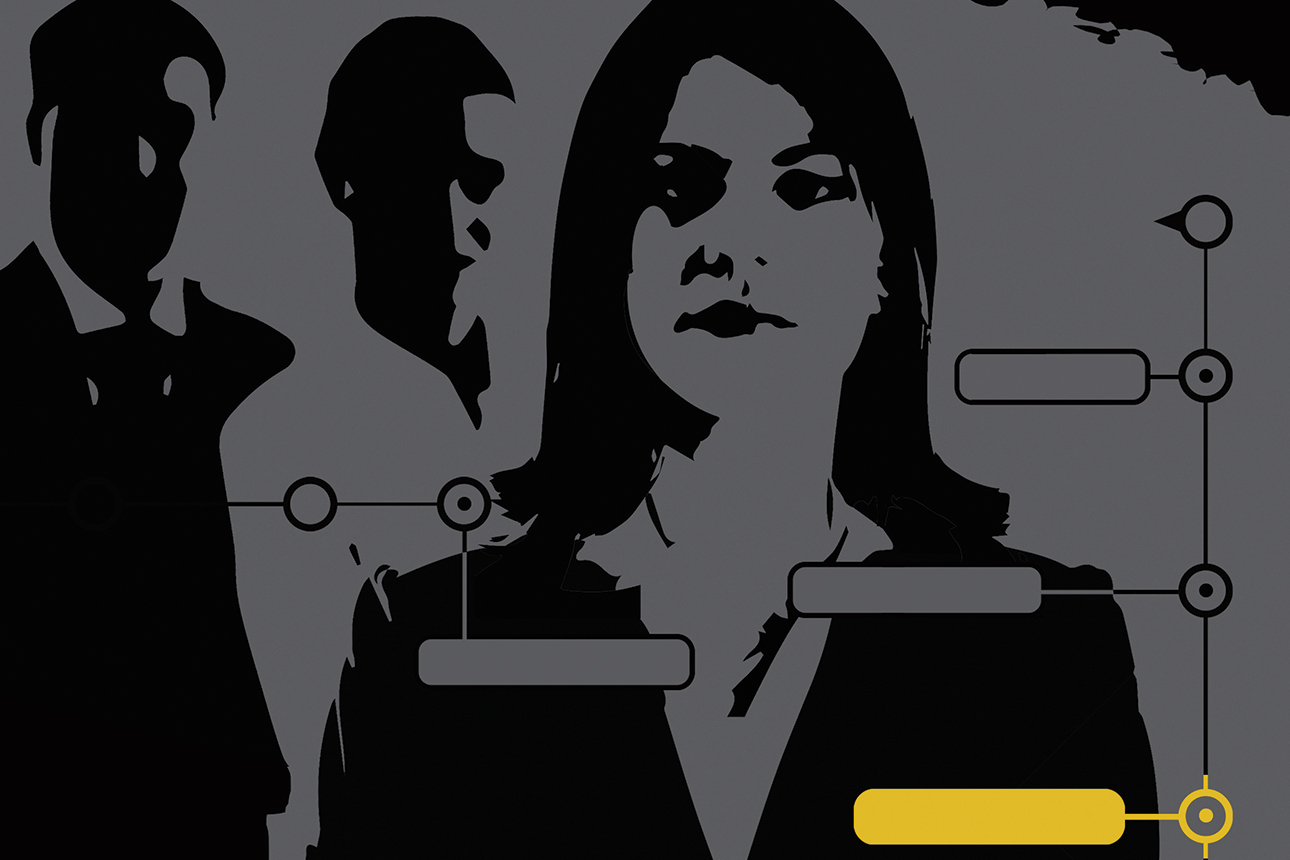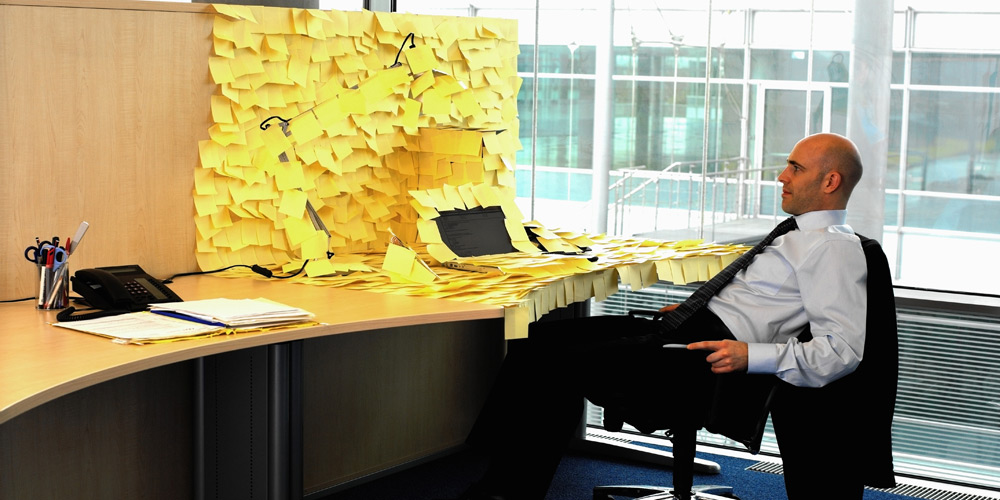Learned a lot lending an editorial hand here:
MIT Sloan Management Review, April 27, 2020
by Erin L. Kelly and Phyllis Moen
Image courtesy of Neil Webb/theispot.com
The way that companies expect employees to work isn’t working. Despite growing awareness of widespread and chronic overload and its ill effects, companies often expect professionals and managers to be “on” well beyond traditional work hours — attending meetings at night, responding to requests on weekends and during vacations, and monitoring their phones, texts, and emails whenever they are awake. Many people become exhausted and burned out struggling to meet such expectations. The result is an overwhelming, demoralizing sense that the demands of work are unrealistic and cannot be met with the resources at hand.
Of course, overload is not restricted to salaried, white-collar workers. But we have found that they are acutely susceptible. In our survey of more than 1,000 of these workers in the IT division of TOMO, our pseudonym for a Fortune 500 company generally viewed as a good employer and a decent corporate citizen, 41% of the division’s professionals and 61% of its managers agreed or strongly agreed with the statement that there is “not enough time to get your job done.”
Escalating work demands and the exhaustion they produce surfaced repeatedly in the 400 interviews we conducted with TOMO employees from 2010 to 2014. For example, Vanessa, a director at the company, told us that she expects her direct reports to “be accessible 24-7, 365 days a year.” If they aren’t going to be available outside working hours, she said, “they need to let me know.”
Jonathon, a manager who reports to Vanessa, shared multiple stories of work encroaching on his home life and volunteer activities. He said he often takes late-night work calls, some of which wake his wife. Despite the success he has attained at work, Jonathon said he is steering his children away from professions like his that are prone to overload. He believes it is an unhealthy and unsustainable way to earn a living.
Evidence collected at TOMO and in a variety of other workplaces, including consulting companies and medical facilities, suggests that Jonathon is right. We heard story after story of health concerns tied to overload from the IT professionals and managers at TOMO. They told us about heart attacks and strokes, disrupted sleep and related forgetfulness, unexplained hives, and other ills. They also described an inability to muster the energy to exercise and to prepare healthy meals, and work pressures that prompted them to smoke and drink more than they considered wise. In fact, employees in our study who put in long hours reported significantly higher levels of burnout, stress, and psychological distress (feeling sad, nervous, restless, hopeless, worthless, and that everything is an effort) than employees who worked fewer hours.
Unpredictable schedules and always-on availability also contribute to employee overload and deteriorate their well-being. Specifically, employees who have variable schedules that they do not control report significantly higher levels of burnout, stress, and psychological distress, as well as lower levels of job satisfaction, than employees who have fixed schedules or feel more in control of when they work. Studies of all kinds of occupations are now documenting the negative health impacts of very long hours and limited control over work time.
Companies that push employees as hard as TOMO are hurting themselves, too. Talented people quit when they become overwhelmed by work or resentful of unrealistic demands — voting with their feet after being expected to do too much for too long. When they exit, their employers lose expertise, knowledge, and sometimes valuable customer relationships...Read the rest here.
Monday, April 27, 2020
Fixing the Overload Problem at Work
Posted by
Theodore Kinni
at
3:03 PM
0
comments
![]()
Labels: books, corporate life, corporate success, employee experience, human resources, management, personal success, work
Thursday, April 23, 2020
Pride and the pandemic
strategy+business, April 23, 2020
by Theodore Kinni
Photograph by svetikd
My sister-in-law texted two photos to our extended family on March 31. One was of a sign installed on the lawn of the Sentara Northern Virginia Medical Center, a 183-bed not-for-profit hospital in Woodbridge, Va. It read “HEROES WORK HERE” in big, colorful letters. The other was of my nephew, wearing scrubs, gloves, and goggles, in the entrance to the hospital’s emergency room, where he’s been working 12-hour shifts. We’re all worried about him. We’re also damn proud of him.
The daily stream of reports detailing the brave work of medical professionals around the world these past few weeks has been a revelation. Facing a virus without a cure and often working despite critical shortages of personal protective equipment, many of these people have been risking their lives simply by walking into work.
They aren’t the only ones working far from the comparative safety of home in this pandemic. Delivery people, warehouse workers, postal employees, supermarket clerks, gas station attendants, and many others are choosing to go to work. Facing layoffs, union members at General Electric’s aviation plants pressured the company to put them to work making ventilators.
Are they doing it for the money? I hope so, at least in part. But there’s also something else at play here — pride.
“An intrinsic feeling of pride based on the relentless pursuit of worthwhile endeavors is a lasting and powerful motivating force,” wrote Jon Katzenbach in his 2003 book, Why Pride Matters More Than Money. Katzenbach, a managing director with PwC US and founder of the Katzenbach Center at Strategy&, PwC’s strategy consulting practice, explored the institution-building capacity of pride and concluded that it is the “most important motivational element in a company.” Read the rest here.
Posted by
Theodore Kinni
at
9:05 AM
0
comments
![]()
Labels: corporate success, decision making, employee experience, leadership, management, work
Wednesday, April 22, 2020
5 Musts for Next-Gen Leaders
Learned a lot lending an editorial hand here:
MIT Sloan Management Review, April 22, 2020
by Amit S. Mukherjee 
Image courtesy of Gordon Studer/theispot.com
Effective leadership isn’t ageless or immutable. Periodically, new technologies overturn established modes and sweep aside executives who don’t adapt.
For most of the 20th century, after transformative technologies made it possible to measure the minutiae of human work, leaders concentrated on maximizing productivity and efficiency, many taking a command-and-control approach. But this autocratic style failed disastrously when upstart Japanese companies used newer technologies — focused on quality — to enter Western markets. In the mid-1980s, unwilling to make the organizational and leadership changes required by this shift in competition, American companies went bankrupt at rates not seen since the Great Depression. Those that survived augmented their long-standing functional silos with teams that enabled cross-functional collaboration, while their leaders learned to empower employees to make decisions.
Today, business is being transformed again — this time by digital technologies. They render some elite skills obsolete and widely distribute others; make work more thought-driven than muscle-powered; shed light on unpredictable customer needs that create disproportionate value; reveal information regardless of the merits of concealment; and affect — and are affected by — environmental conditions near and far. They also connect companies and employees by distributing work across geography and over time.
Current and aspiring leaders must respond to this new wave of change in five key ways. Read the rest here.
Posted by
Theodore Kinni
at
1:14 PM
0
comments
![]()
Labels: books, business history, corporate life, corporate success, digitization, entrepreneurship, human resources, leadership, personal success, work
Thursday, April 16, 2020
Too much work, too little time
strategy+business, April 15, 2020
by Theodore Kinni
Photograph by John Lamb
Someday soon, when the economic engines of the world are running again, leaders will reflect on what the COVID-19 pandemic revealed about the ways and means of work in their companies. As they do, they should read Overload, by Erin L. Kelly, a professor of work and organization studies at the MIT Sloan School of Management, and Phyllis Moen, a sociologist at the University of Minnesota.
Overload details the results of a rigorous five-year study conducted within the IT division of TOMO, an alias for an unidentified Fortune 500 company. The randomized field experiment included nearly 1,000 tech professionals and managers in 56 teams — half of whom redesigned their work and half of whom served as a control group, and didn’t.
The impetus behind TOMO’s unusual openness to participating in this experiment was management’s recognition of a pervasive feeling of, as the authors frame it, overload among the division’s employees. Kelly and Moen, whose team operated under the auspices of Work, Family & Health Network, an interdisciplinary research group focused on workplace interventions, define overload as “the sense that work demands are unrealistic, given limited resources.” Their initial survey of the division’s employees revealed that 41 percent of workers and 61 percent of managers agreed or strongly agreed that there was not enough time to get their jobs done.
These are people, who, in addition to long days on the job, were routinely taking calls and working at home, at night, and on weekends. In fact, at least one of the managers had been demanding advance notification anytime the people she supervised weren’t going to be available outside of working hours. This supervisor told the authors that she expected her direct reports to “be accessible 24/7, 365 days a year.” The pernicious consequences of this work intensity? Repeated surveys and more than 400 individual interviews at TOMO revealed high levels of chronic stress and ill health, feelings of powerlessness, work–family conflict, and burnout — all of which negatively affect employee performance, of course. Read the rest here.
Posted by
Theodore Kinni
at
2:40 PM
0
comments
![]()
Labels: bizbook review, books, corporate success, employee experience, org culture, productivity, work
Tuesday, April 14, 2020
Joel Peterson: How Entrepreneurs Should Lead in Times of Crisis
Insights by Stanford Business, April 14, 2020
by Theodore Kinni iStock/DrAfter123
iStock/DrAfter123
One Saturday afternoon in 2016, Diana Peterson left home for a 4-mile hike in Millcreek Canyon, just outside Salt Lake City, and disappeared. As darkness fell, her husband, Joel, began calling family members to see if anyone had heard from her. A short time later, Diana’s car was located at a trailhead and a search-and-rescue mission was launched.
As morning broke, cadaver dogs were called in and Joel Peterson drove home to find some of his wife’s clothing so the dogs could track her scent. Morbidly, he found himself composing her obituary. Happily, he didn’t need to finish it. As he arrived back at the canyon, Diana reappeared. She had a shattered wrist and was exhausted, but she was alive.
It’s an odd story to find in a book on leadership, but Peterson — a long-time Stanford Graduate School of Business adjunct professor and the chairman of JetBlue — eventually came to see the harrowing incident as a metaphor.
“Just as Diana knew all about flashlights, trail mix, water bottles, walkie-talkies, the importance of hydration, of staying on trails, and of not hiking on trails after dark or alone, in theory our students know about the perils of entrepreneurship and the requisite principles of effective leadership,” he writes in the introduction to his new book, Entrepreneurial Leadership: The Art of Launching New Ventures, Inspiring Others, and Running Stuff. “They are well-prepared in theory, but not in practice.”
The book is Peterson’s way of addressing this gap between leadership theory and practice. In it, he offers the same practical framework — the “set of principles, mind-sets, and self-talk” — that he has used to good effect in his life and career. Here, based on excerpts from a recent interview and the book itself, Peterson offers four key pieces of advice for leaders facing crises — such as the current COVID-19 pandemic and the economic chaos it has spawned. Read the rest here.
Posted by
Theodore Kinni
at
9:28 AM
0
comments
![]()
Labels: books, corporate success, decision making, entrepreneurship, leadership, management, personal success














